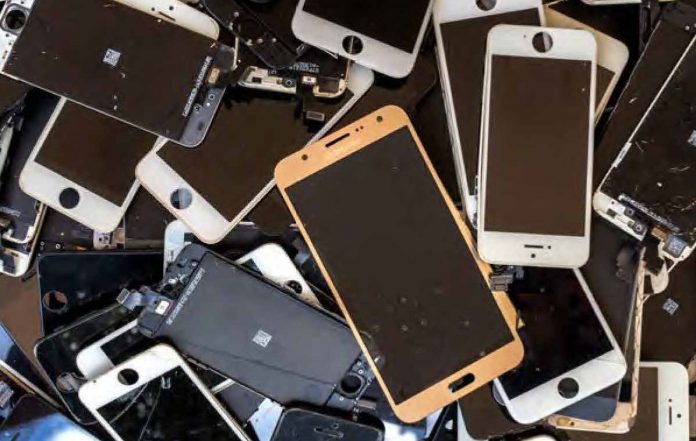Within the span of a mere decade since the popularisation of smartphones, a staggering 7.1 billion devices have been used and this number continues to grow today. We need to change the way we use our mobile phones if we don’t want to pay a price for convenience we can’t afford to. (Text: Rajeswari Vikiraman and Rachel Kwek)
In 2007, the information and communications technologies industry (ICT), which embodies computers, phones, laptops and telecommunications structures like satellite dishes, routers and data centres, was found to be responsible for about 1.3 percent of global greenhouse gases (GHG). While this figure seems relatively low, a 2018 study by researchers from McMaster University in Canada revealed that the global footprint of the ICT industry is well on its way to be 3.5 percent by 2020. If left unchecked, it could potentially reach 14 percent by 2040 – the equivalent of more than half the worldwide emissions of the transport industry and this will make the ICT industry the most environmentally damaging technologies. Contributing the most to the carbon footprint of the ICT industry is the gadget that has brought us much convenience in our daily lives – smartphones. Originating from mobile phones whose primary purpose was to enable telecommunication on the go, the gadget has undergone a revolutionary change and now serves as the all-encompassing device to communicate, store data, access information and make purchases among various other uses.
The smartphone’s myriad functionalities have resulted in the heavy dependence on it, encouraging the prediction that by 2020, the carbon emissions contributed by smartphones would be 11 percent of total emissions from the industry, exceeding the individual contributions of desktops, laptops and displays. Up from 4 percent in 2010, this represents a growth from 17 to 125 megatons of CO2 per year.
Carbon emissions from smartphones come from both its use as well as its production. A research in 2014 predicted that by this year, the amount of greenhouse gases released from recharging smartphones will be more than 13 megatons – equivalent to the emissions of 1.1 million cars. This has been attributed to the coal-fired electricity grids in Asia from which almost half the energy would come from. This may come as a surprise to some as carbon emissions produced by recharging mobile phones are generally thought to be negligible, more so because smartphones are increasingly marketed as energy efficient over the years.
Nonetheless, the usage of smartphones consumes large amounts of energy. A 2013 study found that watching an hour of video on a smartphone every week for one year uses about the same amount of energy as two new domestic fridges; this energy is consumed not by the battery but by infrastructures known as data centres where a host of background activities take place to enable smartphone tasks such as video playing. Housing equipment that enables the use of networks for calls and wireless connection as well as data storage and usage, the data centres operate 24 hours a day, seven days a week. They consume an estimated 200 terawatt hours (TWh) every year – more than the national energy consumption of Iran. As most of this energy is derived from non-renewable sources, the uncontrolled use of smartphones inevitably becomes unsustainable.

For all things mobile, check out the rest of this article in our special issue on the Environment (Asian Geographic No.134 Issue 1/2019 ) here or download a digital copy here











